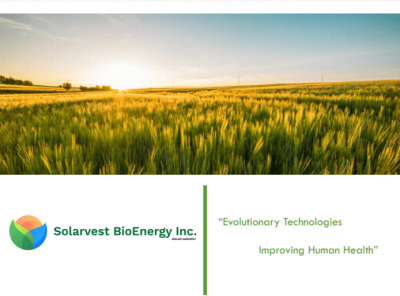The Paradox Of Clean Energy: Booming, But Under Fire

Table of Contents
The Explosive Growth of Clean Energy
The surge in clean energy adoption is undeniable, driven by a confluence of factors. This rapid expansion is reshaping the global energy landscape and presenting both immense opportunities and significant hurdles.
Technological Advancements Driving the Boom
Technological innovation is the engine of the clean energy revolution. Significant breakthroughs have made renewable energy sources increasingly competitive with fossil fuels.
-
Decreased costs of solar and wind power: The cost of solar photovoltaic (PV) panels has plummeted by over 80% in the last decade, making solar power increasingly affordable. Similarly, wind turbine technology has become more efficient and cheaper to manufacture. This price reduction is a major catalyst for widespread adoption. For example, the levelized cost of energy (LCOE) for utility-scale solar is now often lower than that of fossil fuel-based power plants in many regions.
-
Advancements in battery storage technology: Improvements in battery technology are crucial for addressing the intermittency of renewable energy sources like solar and wind. Lithium-ion batteries are becoming cheaper and more efficient, enabling greater energy storage capacity and longer lifespans. Companies like Tesla are at the forefront of this innovation, driving down costs and improving performance.
-
Increased efficiency of renewable energy sources: Continuous R&D leads to higher efficiency rates in solar panels and wind turbines. This means more energy is generated from the same amount of resources, increasing the overall cost-effectiveness of renewable energy systems. For instance, perovskite solar cells are showing promising results with higher efficiency potential compared to traditional silicon-based cells.
-
Emergence of smart grids: Smart grid technologies enhance the integration of renewable energy sources into existing power grids. Smart meters, advanced sensors, and sophisticated control systems optimize energy distribution and improve grid stability, making the transition to clean energy smoother and more reliable.
Government Policies and Incentives
Government support plays a crucial role in fostering clean energy growth. Policies designed to incentivize renewable energy adoption are driving significant investment and deployment.
-
Renewable energy mandates: Many countries have implemented renewable portfolio standards (RPS), requiring a certain percentage of electricity generation to come from renewable sources. This creates a guaranteed market for clean energy producers.
-
Tax credits and subsidies: Governments worldwide offer various financial incentives, such as tax credits and subsidies, to reduce the cost of renewable energy technologies and make them more attractive to consumers and businesses. These incentives are instrumental in accelerating adoption.
-
Carbon pricing mechanisms: Carbon taxes and emissions trading schemes put a price on carbon emissions, making fossil fuels more expensive and increasing the competitiveness of clean energy alternatives. The European Union's Emissions Trading System (ETS) is a prominent example.
-
International agreements like the Paris Agreement: The Paris Agreement, adopted in 2015, commits participating countries to reduce greenhouse gas emissions. This global framework creates a political impetus for the transition to clean energy and encourages international cooperation.
Increasing Consumer Demand
A growing awareness of climate change and a desire for a sustainable future are driving consumer demand for clean energy solutions.
-
Growing awareness of climate change: Public awareness of climate change and its impacts is fueling a preference for environmentally friendly energy choices. Consumers are increasingly seeking out renewable energy options for their homes and businesses.
-
Desire for energy independence: Many consumers are motivated by a desire for greater energy independence and reduced reliance on fossil fuels, particularly in regions with volatile energy prices.
-
Corporate sustainability initiatives: Many corporations are incorporating sustainability into their business strategies, adopting renewable energy to reduce their carbon footprint and enhance their brand image.
-
Consumer preference for eco-friendly products and services: Consumers are actively seeking out eco-friendly products and services, including those powered by renewable energy. This growing preference is putting pressure on businesses to adopt cleaner energy sources.
The Challenges and Criticisms Facing Clean Energy
Despite its rapid growth, the clean energy sector faces significant challenges and criticisms that could hinder its progress.
Intermittency and Reliability Issues
The intermittent nature of solar and wind power poses a major challenge for grid stability and reliability.
-
The inconsistent nature of solar and wind power: Solar power generation depends on sunlight, while wind power depends on wind speed. These sources are inherently intermittent, meaning their output fluctuates depending on weather conditions.
-
The need for reliable backup power sources: To ensure grid reliability, backup power sources are needed to compensate for periods when solar and wind power are unavailable. This often involves the use of fossil fuel-based power plants, which undermines the emissions reduction goals.
-
Challenges in grid integration: Integrating intermittent renewable energy sources into existing power grids requires sophisticated grid management systems and advanced technologies to ensure stable electricity supply.
-
Energy storage limitations: While battery technology is improving, it is still relatively expensive and has limitations in terms of storage capacity and lifespan. Developing more efficient and cost-effective energy storage solutions is essential for overcoming the intermittency challenge.
Environmental Concerns Associated with Clean Energy
The production and deployment of clean energy technologies are not without environmental impacts.
-
Land use impacts of large-scale solar and wind farms: Large-scale solar and wind farms require significant land areas, potentially impacting ecosystems and habitats.
-
Mining of rare earth minerals for batteries and wind turbines: The extraction and processing of rare earth minerals used in batteries and wind turbines can have significant environmental consequences, including habitat destruction and water pollution.
-
Potential for habitat disruption and biodiversity loss: The construction and operation of clean energy infrastructure can disrupt wildlife habitats and lead to biodiversity loss if not properly planned and managed. Careful environmental impact assessments are crucial.
Economic and Social Impacts
The transition to clean energy has significant economic and social consequences that must be carefully managed.
-
Job displacement in fossil fuel industries: The decline of the fossil fuel industry will inevitably lead to job losses in coal mining, oil drilling, and related sectors. Retraining and job creation programs are essential to mitigate this impact.
-
Concerns about energy affordability: The upfront costs of installing renewable energy systems can be high, raising concerns about energy affordability for low-income households. Subsidies and financing mechanisms are necessary to ensure equitable access.
-
Potential for uneven distribution of benefits and costs across different regions and communities: The economic benefits of clean energy development may not be evenly distributed, potentially exacerbating existing inequalities. Policies promoting local participation and benefit-sharing are vital.
Conclusion
The clean energy sector is undeniably booming, driven by technological advancements, supportive policies, and increasing consumer demand. However, significant challenges related to intermittency, environmental impacts, and socioeconomic consequences must be addressed to ensure a sustainable and equitable transition to a clean energy future. Understanding the paradox of clean energy—its rapid growth alongside its inherent challenges—is crucial for informed decision-making. Let's work together to navigate these complexities and accelerate the responsible development and deployment of clean energy solutions for a brighter future. Learn more about the latest advancements and challenges in the field of clean energy and contribute to a sustainable future.

Featured Posts
-
 Evolution Of Wireless Headphones Key Advancements
May 20, 2025
Evolution Of Wireless Headphones Key Advancements
May 20, 2025 -
 Mark Zuckerberg Entering A New Era In A Trump Led America
May 20, 2025
Mark Zuckerberg Entering A New Era In A Trump Led America
May 20, 2025 -
 Watch Out For High Winds Safety Precautions During Fast Moving Storms
May 20, 2025
Watch Out For High Winds Safety Precautions During Fast Moving Storms
May 20, 2025 -
 New Burnham And Highbridge History Photo Archive Opens Tomorrow
May 20, 2025
New Burnham And Highbridge History Photo Archive Opens Tomorrow
May 20, 2025 -
 Agatha Christies Poirot A Detectives Enduring Appeal
May 20, 2025
Agatha Christies Poirot A Detectives Enduring Appeal
May 20, 2025
